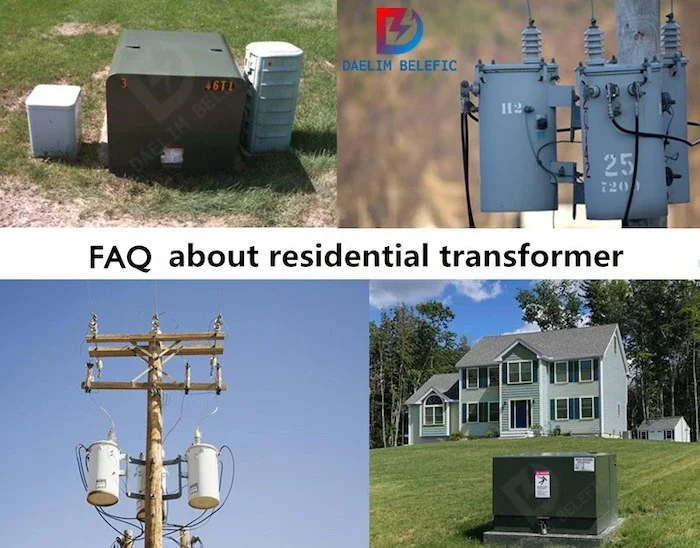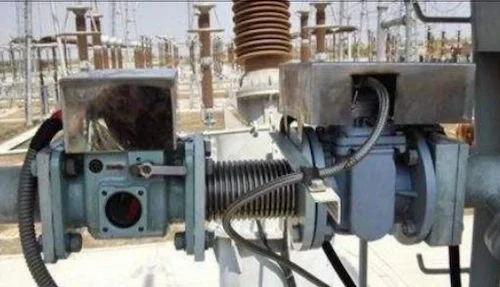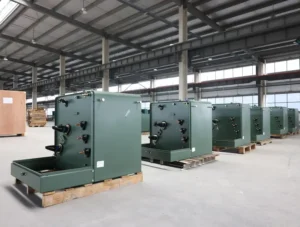FAQ about residential transformer

Residential transformer converts voltage from the distribution system to residential electricity.
Traditionally, the power system is divided into three parts: generation, transmission and distribution.
The electric energy generated by the power generation system is transmitted through the transmission system, and finally distributed to each user by the distribution system. Generally, the section of the power system from the step-down distribution substation (high voltage distribution substation) to the user end is called the power distribution system. (what is distribution transformer?)
In this article, we are going to discuss residential transformers that DAELIM provides used in our buildings.
Pad-mounted Transformer
Dry-type Transformer
Oil immersed transformer
Table of Content
What ia a residential transformer?

Residential transformers, as its name suggests, are mainly used in residential areas. There are two main types of transformers of this type, one is pole-mount single-phase transformer, and the other is single-phase pad mounted transformer.
Because it is used in a residential area, the voltage and capacity of the residential transformer will not be very high. When we walk through residential areas in North or South American suburbs, we see a green or gray square box at the door of each courtyard, which is a residential transformer. You will also see cylinder-shaped devices on utility poles in sparsely populated areas, which is another type residential transformer-pole mount single phase transformer.
How to choose capacity of residential transformer?
Power Calculation and Selection of Building Residential Transformer
The calculation of residential transformer capacity selection is based on the conventional calculation method; it is the total designed capacity of residential users in the community, which is the sum of the capacity of – households – households, and because the residential electricity is single-phase, we need to convert this number into three Phase four-wire electricity, then, the relationship between phase current and line current is the problem of root number 3, that is, the sum of this single-phase power divided by 1.732, is converted into three-phase four-wire power.
700 households, each household consumes 4KW of electricity, the sum of one household is 2800/1.732 = 1616KW, this number is the maximum power of all electrical appliances in the community at the same time, then, in actual use, this situation will not happen. If yes, then there is a called simultaneous power consumption rate, generally 70-80%, which is determined according to the user structure characteristics of the cell. However, according to the economic operation value of the transformer is 75%, then we can offset these two values, and calculate the capacity of the transformer according to this power. Then, the capacity of this transformer is the total total power of 2800/1.732=1616KW. According to In the case of residential electricity, the power factor is now 0.85-0.9, and the apparent power Sp= P+0.85 = 1616/0.85 =1901KVA.
How to calculate, first divide the total 2800 power into three lines of power, which is single-phase power, 2800/3=933KW, then convert this single-phase power into three-phase power, 933×1.732 ≈ 808KW, and then Divided by the power factor of 0.85 = 1901KVA.
According to the standard capacity of this data set of transformers, it is recommended to select one transformer with a total capacity of 1900KVA. If future development is considered, two 1000KVA transformers can also be selected, or one 2000KVA transformer can be directly selected.
We know that the power KVA of the transformer represents the apparent power, and there is no need to calculate the power factor when calculating the three-phase AC current. Therefore, Sp= l3xUxl. When selecting, the data should be larger than the actual data, so as to ensure the safe operation of the equipment.
Keep on reading VIETNAM CUSTOMERS
What types of transformer are used for residential?

Single phase pole mounted transformer (KNOW MORE IN DAELIM), single phase pad mounted transformers (KNOW MORE IN DAELIM)are frequently user in residential areas in American countries. They transform voltage from distribution system three phase 7200V, 13800V, etc into residential usage: single phase 120V and 240V. In China, three phase overhead distribution transformers are commonly used for residential transformer,the voltage standard of ordinary residents in China is single-phase, AC 50HZ, 220V.

How far should a residential transformer be from humans?
The load factor of the residential transformer is the ratio of the output apparent power of the transformer to the rated capacity of the transformer, also known as the load factor.
In order to balance the optimal operation of the transformer and the return on investment, the conclusions are as follows:
The optimal economic operating range of double-winding transformers commonly used in civil buildings is revised as: βJZ~75%.
Read my article on How to Choose a Pad Mounted Transformer and Delta Wye Transformer?
Tips of installation & maintenance residential transformer
What is Fake Oil LEVEL?
Answer: When the oil temperature indication is normal, but the oil level indication does not correspond to the oil temperature indication, it should be judged that the oil level indication is a false oil level.
Try for free information about the How to produce a distribution transformer ?
What ﹢40℃, ﹢20℃, -30℃ three tick mark means in oil level indicator?
Answer:﹢40℃ means the maximum oil level of the transformer at the installation site when the maximum ambient temperature is ﹢40℃, and the oil level must not exceed this line; ﹢20℃means the oil level when the annual average temperature is ﹢20℃; -30℃ means the environment is -30℃ The minimum oil level line of the no-load transformer shall not be lower than this line. If the oil level is too low, add oil.
Let’s know learn more about the EAF TRANSFORMER MEXICO
After the newly installed transformer is filled with oil, what should be done before applying voltage?
Answer: After oil filling, before applying voltage, the resting time should not be less than the following
Regulations: 110kV and below, 24h; 220kV and 330kV, 48h; 500kV,72h. After standing, it should be removed from the transformer bushing, riser, cooling device, air .
The relevant parts such as the body relay and the pressure release device are degassed several times.
Keep on reading Electrical transformer – DAELIM BELEFIC
What information and documents should be handed over when the transformer is installed and accepted?
Answer: The materials and documents that should be handed over are:
(1) The actual construction drawing of the changed design part;
(2) Documents proving the design change;
(3) Product instructions, test records, qualification certificates and installation provided by the manufacturer technical documents such as drawings;
(4) Installation technical records, body inspection records, drying records, etc.;
(5) Test report;
(6) Spare parts handover list.
You may interested in Introduction of a special transformer – furnace transformer
Under what circumstances should the transformer be shut down immediately?
Answer: The transformer should be stopped immediately if one of the following conditions occurs. If there is a spare in operation
Transformers, which should be put into operation first if possible:
(1) The sound of the transformer increases significantly, which is very abnormal, and there is a popping sound inside.
(2) Serious oil leakage or oil injection, so that the oil level drops below the indicated limit of the oil level gauge.
(3) The casing has serious damage and discharge.
(4) The transformer caught fire with smoke.
(5) When the equipment near the transformer catches fire, explodes or occurs in other situations, the transformer
When the transformer poses a serious threat, the on-duty personnel should immediately shut down the transformer.
(6) Under normal load and cooling conditions, if the temperature of the transformer is abnormal and continues to rise, and the temperature indication is correct after inspection, it is considered that the transformer has an internal fault, and the transformer should be stopped immediately.
Know more about The most complete explanation of grounding transformer
What is a transformer flange?
Answer: Any connecting parts that are bolted at the periphery of the two planes and closed at the same time are generally flanges. The installation position of the transformer flange is shown in the figure

What are the reasons for the pointer oil level indicator to indicate a false oil level?
1. The bottom of the airbag is broken, and insulating oil pours into the airbag, so that the pointer oil level gauge does not float up and down with the oil level
2. The float is broken
3. Link and rocker arm failure.
Try for free High voltage transformer – 138kv power transformer
Daelim residential transformer
Daelim is a factory specialized in designing and producing residential transformers.
There is a technical team specializing in designing residential transformers, mainly targeting North America, South America and other markets. Daelim’s residential transformers have UL list, UL certificate and CSA test report. A large number of transformers are exported to the United States and Canada and other regions, and they are fully familiar with technical standards such as DOE, CSA, ANSI, and IEEE. If you encounter a more difficult residential transformer project, you can contact the Daelim team for a solution.











